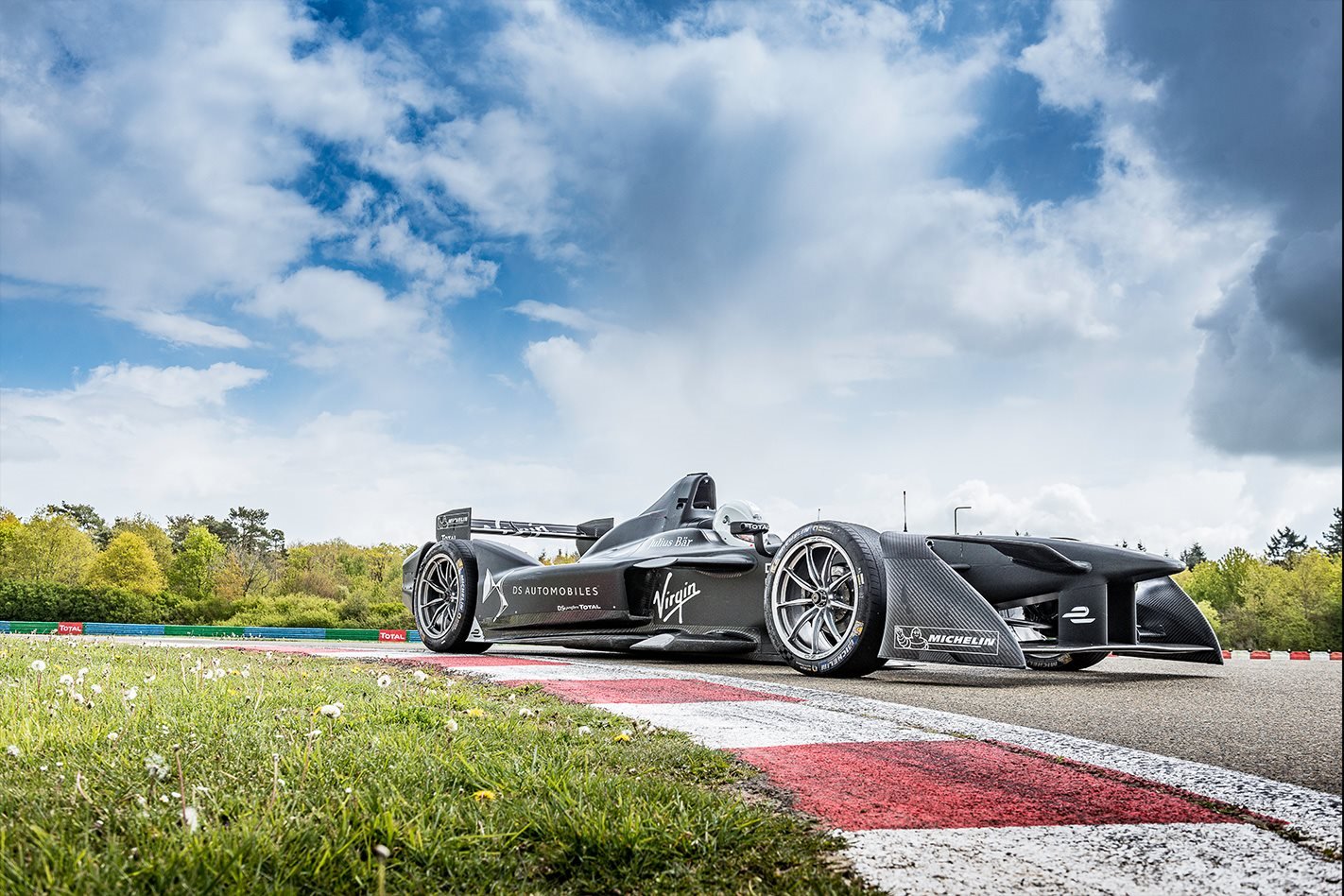MINUTES earlier, DS Performance technical director Thomas Chevaucher had leaned into the Formula E car’s cockpit and asked me not to crash.
This, we agreed, was a great plan.
DS Performance had brought just one of its DSV-02 all-electric single seaters to Circuit Dreux near Paris, I was about to be the first journalist to drive it, and we were interrupting DS driver Sam Bird’s test. Crashing would be expensive, inconvenient and embarrassing. It seemed like a really bad idea.
But now I’m heading down the back straight, closing rapidly on a hairpin, and as I go from full acceleration to full braking I see the top of the treaded tyre stop rotating before I actually feel that I’ve locked the brakes, and sense the back of the car stepping out of line. Things are not playing in slow motion like people always say they do; in fact, I’m pretty sure they’re speeding up – the grass and barriers certainly are.

Formula E is the all-electric, FIA-sanctioned championship that races 12 times a year on temporary street circuits globally. It’s about to enter its fourth season, and it’s on a roll. A roster of ex-F1 drivers adds TV-friendly stardust, and manufacturers are taking the series increasingly seriously.
Next year, Audi ups its involvement, Jaguar enters its second season and McLaren batteries will power the entire grid. Nissan also replaces Renault, BMW and Porsche join the series and rumours swirl around Mercedes-Benz. As manufacturers clamour to embrace e-mobility, Formula E looks very well placed indeed.
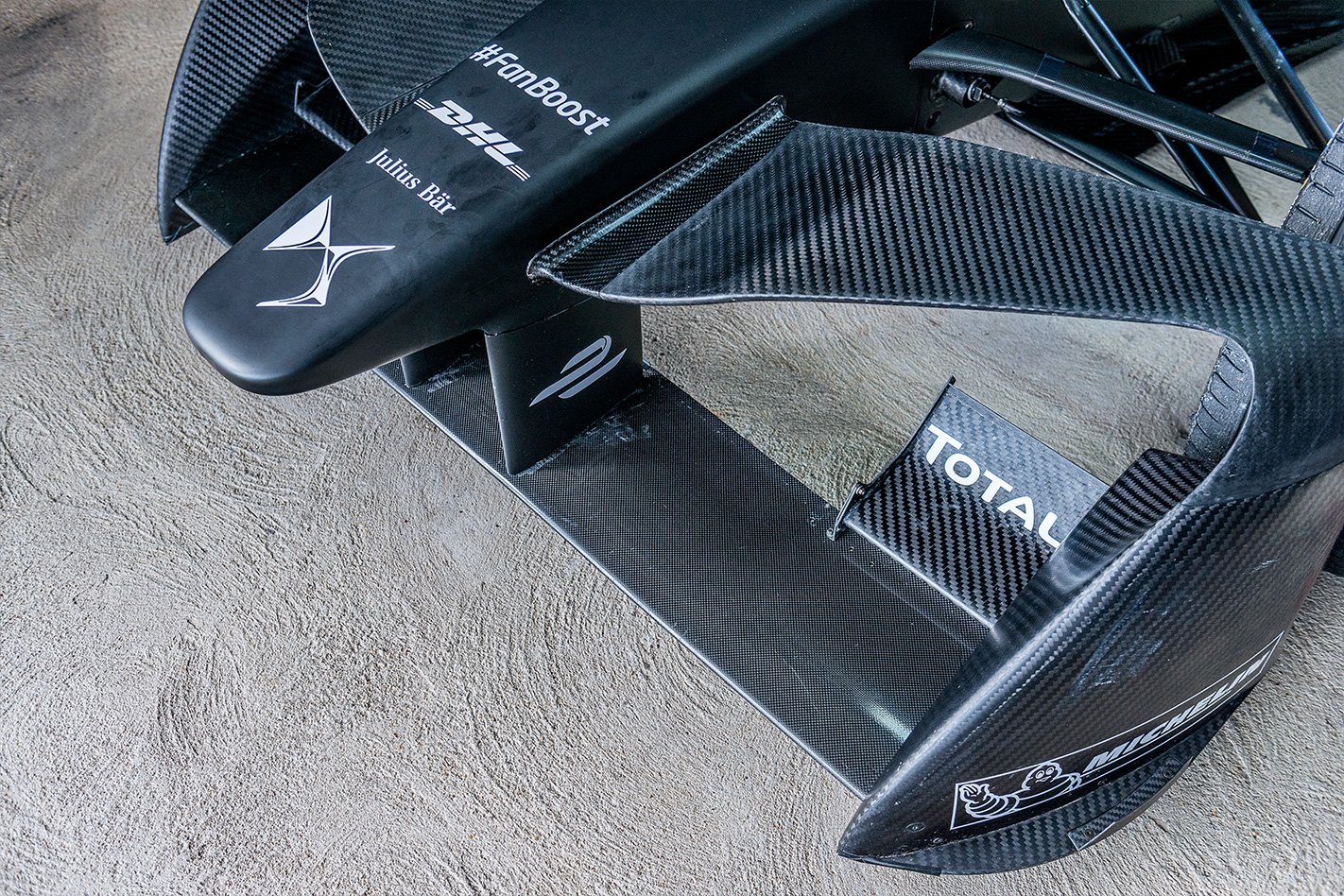
To control costs, the Dallara carbonfibre chassis, front suspension and aero package is common to all Formula E competitors. The grooved 18-inch tyres are also universal and used for both wet and dry races. They’re much more comparable to road cars than the steamroller 13s seen in F1 and with thinner sidewalls the suspension has more work to do on bumpy street circuits.
The rear suspension design is the only component of the chassis that offers scope for the team to adjust, but the powertrain is a different story. The 700-volt lithium-ion battery is common, but the electric motor, three-speed gearbox and inverter are to DS Performance’s design.
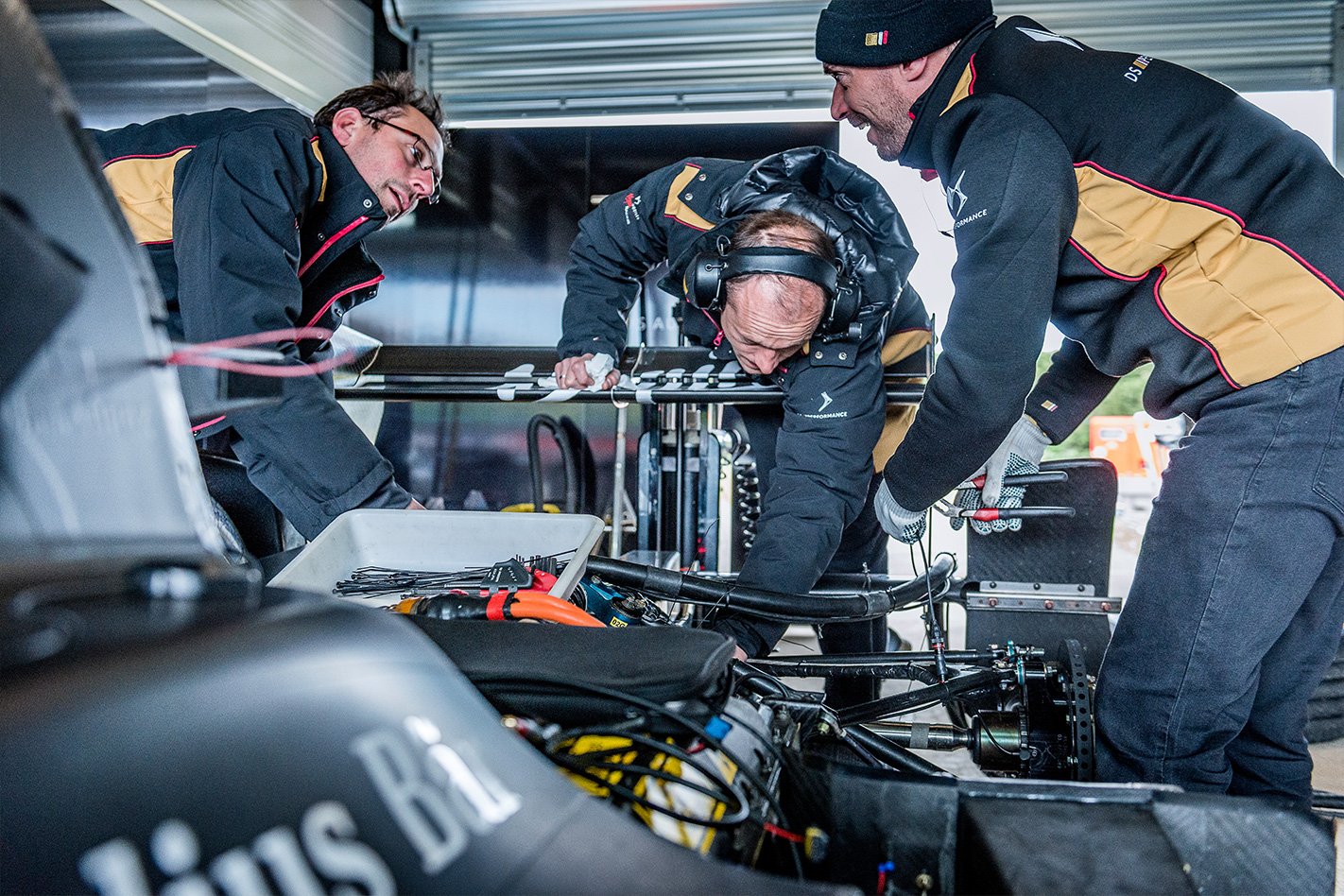
‘We are two years in advance of road cars,’ says Chevaucher. ‘We don’t share technology directly, but it’s the understanding that’s important.’
Driver Sam Bird finished fourth overall last season. He explains that while a Formula E car might feel quite alien to drive in some respects, fundamentally it’s a single-seater with four wheels, two pedals and a steering wheel. Driving one fast isn’t really the hard part if you’re a professional race driver. The strategy of conserving the electric battery and harvesting energy while racing rivals wheel-to-wheel is the challenge.
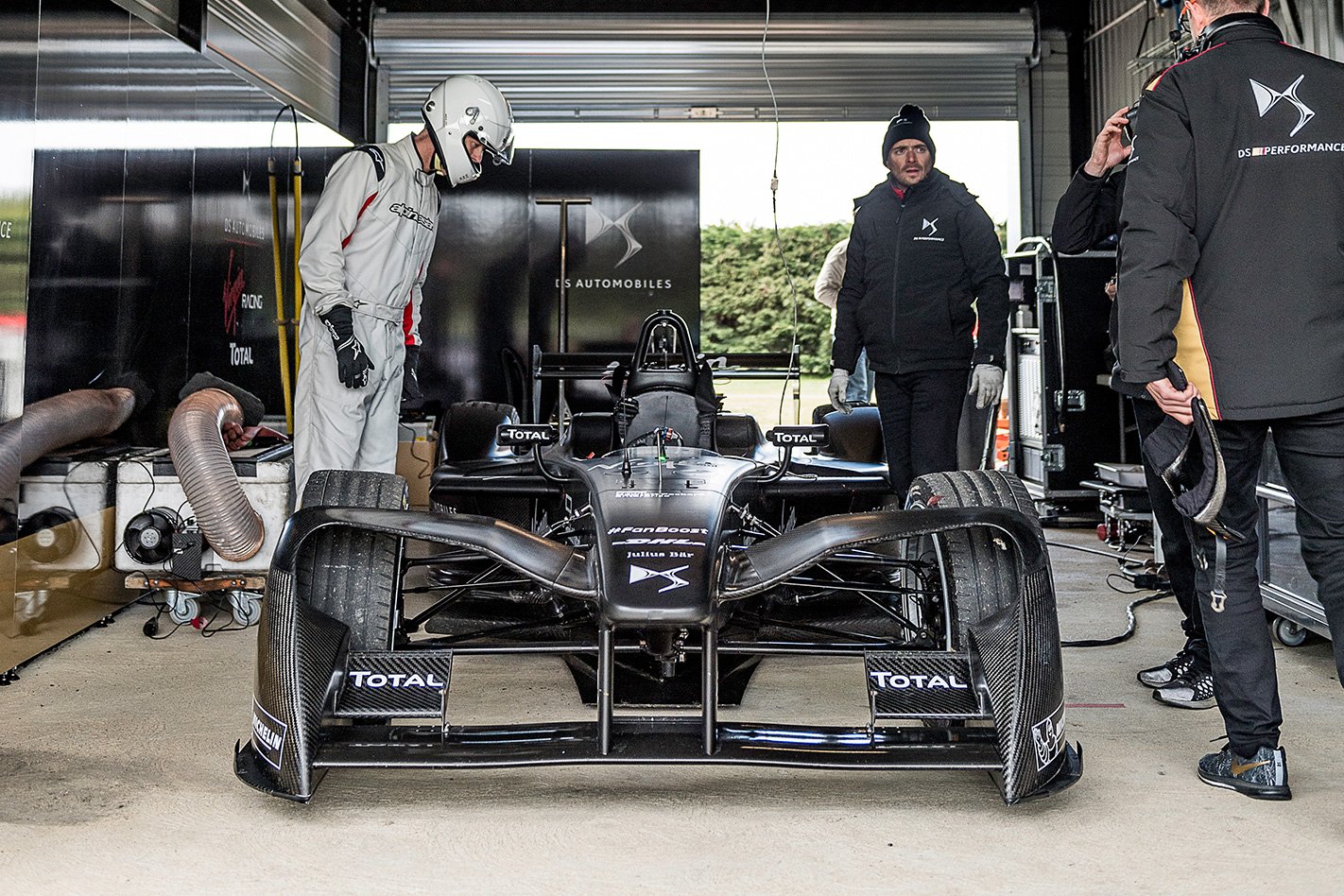
“I’ve done GP2, World Endurance, and this is the most difficult by far. We’ve got drivers like Buemi, da Costa, Lopez, Vergne, and they’re all world class, 20 of us within an inch of each other. I think that’s exciting for the fans, as well as relevant to where we are on the planet today.”
I climb in the carbonfibre chassis, backside low, feet straight ahead, legs bent a little more than I’d like, head rest clipped in afterwards and only just clearing my shoulders. Chevaucher attaches the steering wheel, explaining that the middle paddles control the gears, while the top right paddle is for Fanboost. Fans can vote on social media, providing the most popular driver – usually di Grassi – with an extra burst of energy. With just a few engineers looking on anxiously, there’s little chance of that today. The bottom right paddle is for re-gen. Mysteriously, the purpose of the top and bottom left paddles remains secret.

The sensation of light-switch thrust is similar to a Tesla in Ludicrous mode, but your backside is almost skimming the asphalt, and the vacuum of conventional engine noise is filled by a barrage of wind noise like you’ve jumped from a plane in a wing suit. The car is far from completely silent, though: there’s transmission whine and the fizzy bass of the electric motor, which rises and falls in line with acceleration and deceleration like a synthesiser’s pitch bender. It’s a very alien soundtrack, but one that isn’t without appeal.
The torque means you can stay in one gear the whole time, and Chevaucher says the gears are really there to help energy conservation, but it also feels natural to use them for performance. There’s a clunk as you pull back the paddleshifter, the familiarity of mechanical engagement amid all the strange whizzing and whirring.
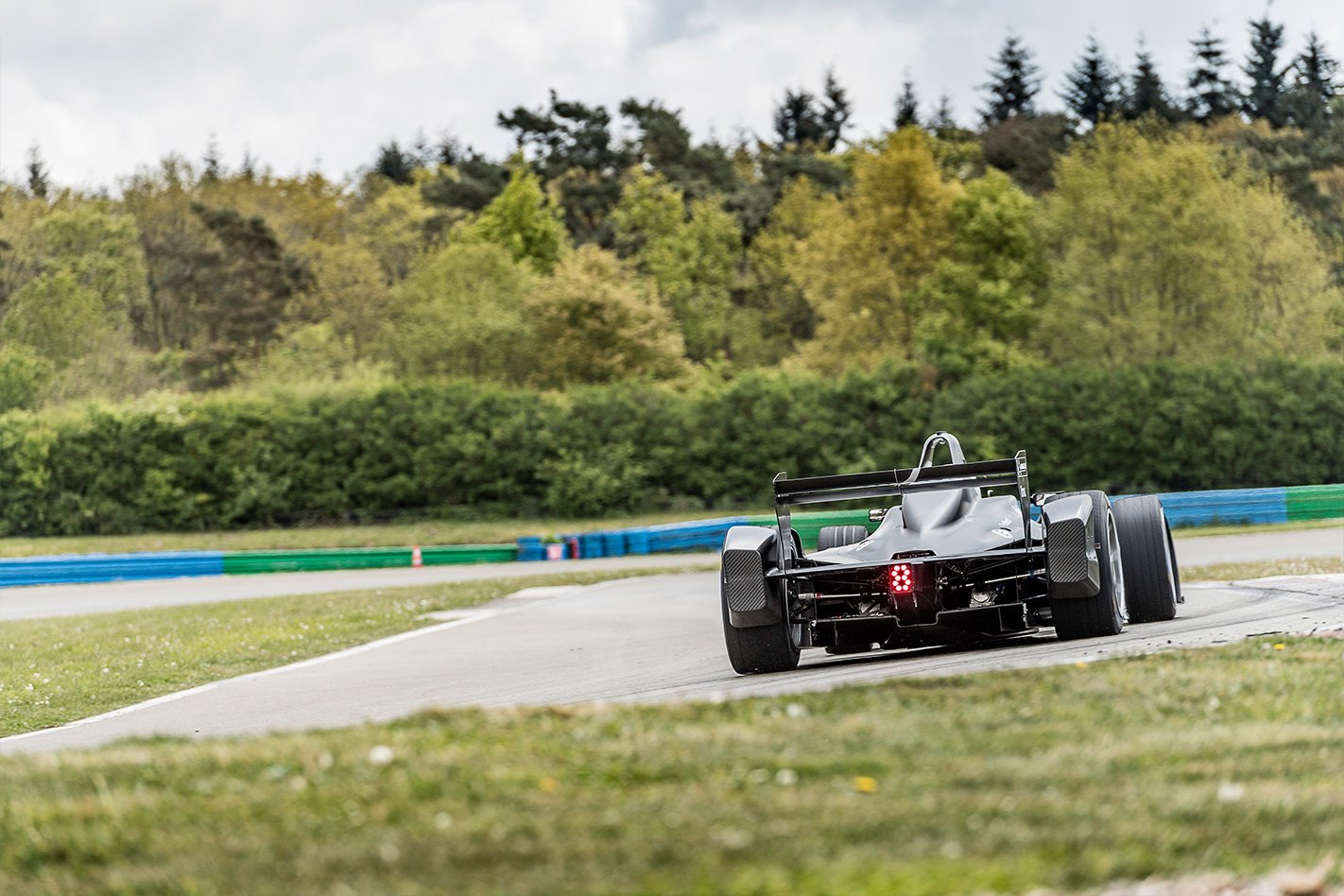
Wary of destroying the car and of its worn-out tyres, I’m perhaps a little over-cautious in the faster corners, but I’m never really aware of an aero effect, and the DSV-02 is quite car-like in the way it shifts around slightly beneath you. Feed in throttle as the corner straightens and the electric racer gathers speed with the kind of runaway intensity that makes you tense and smile all at the same time.
Exiting slower corners, the front tyres start to scrub slightly. A Formula E car does have a higher percentage of its weight at the rear than a typical single seater, and maintains that balance because it doesn’t burn fuel; perhaps that contributes some understeer. Yet if you’re just a little greedy on the throttle, it’ll oversteer eagerly, especially in second gear. You need to be quick with corrections, but it’s a lot of fun.
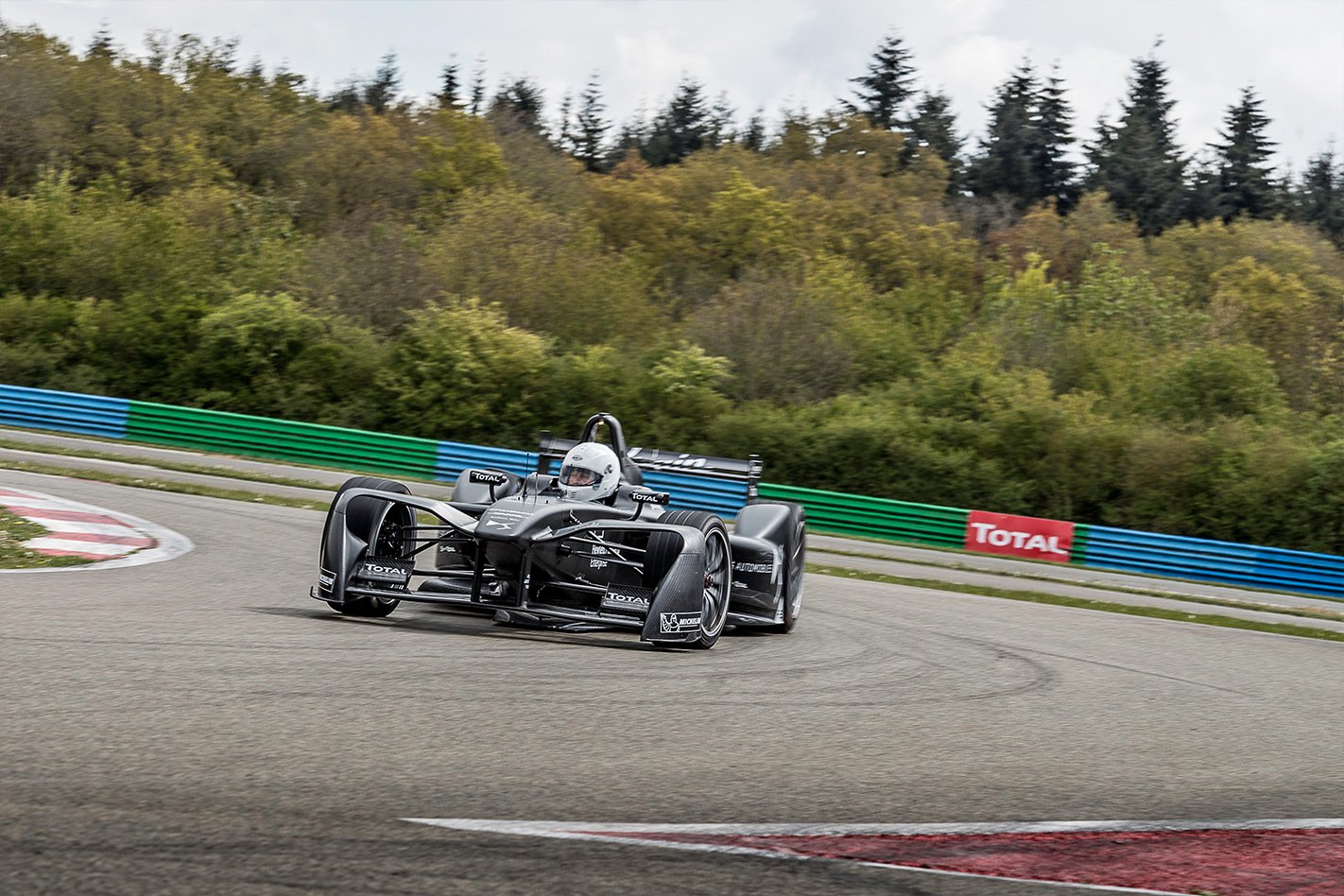
Earlier, Bird had told me to hold out for the brake board at the end of the long back straight, and I swear he’s shifted it 50 metres upstream as a prank. It feels very, very late, especially as the speed is escalating so quickly as you hold out for the marker.
Towards the end of the stint, I steel myself to brake maybe just very slightly earlier as the hairpin zooms up. I feel the brake pressure build up hard, and it’s then that I have my lock-up. Bird says the grooved tyres are easy to lock, but are more resistant to flat-spotting than a slick.
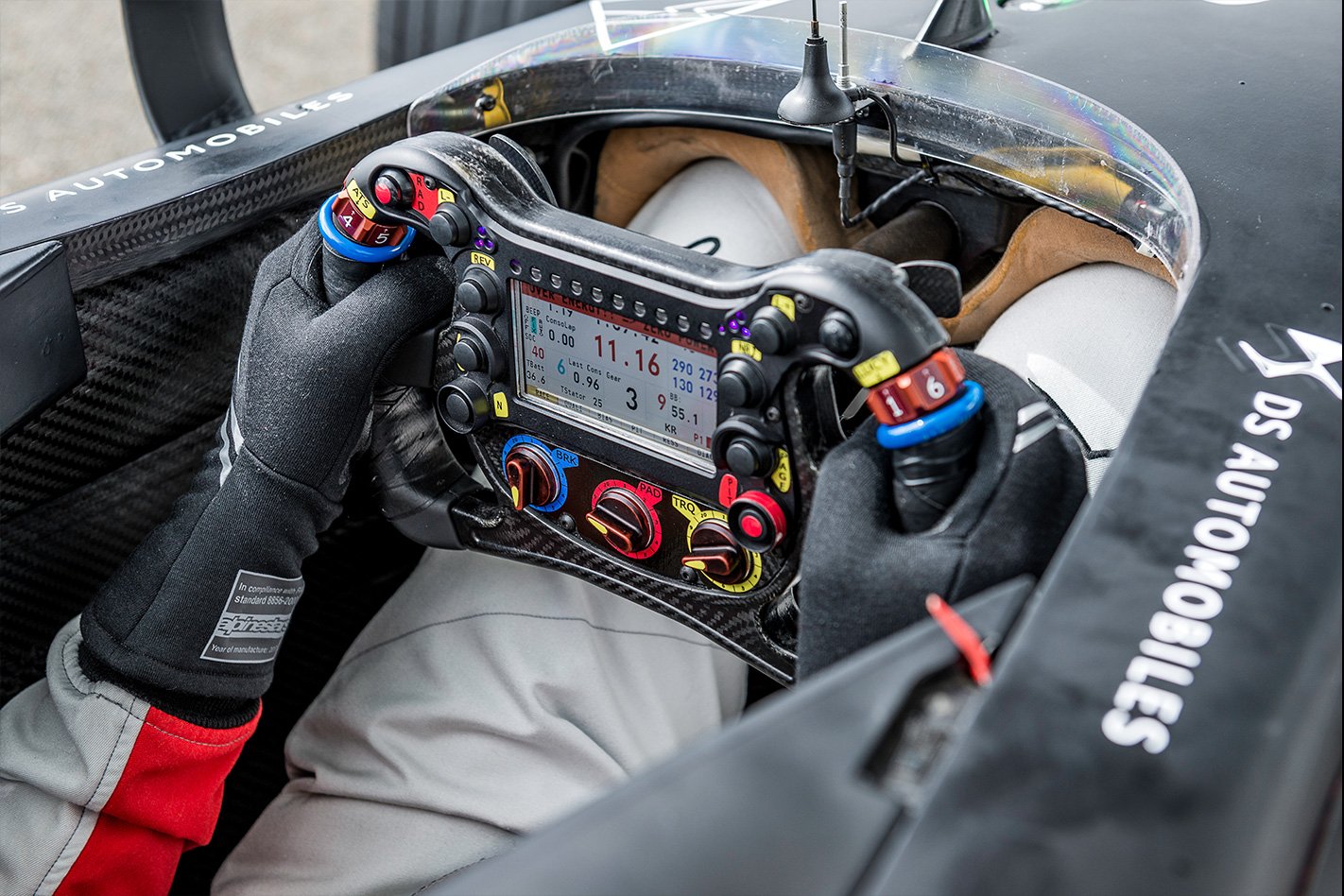
Understanding what he’s doing is relatively simple, but how he strings it all together during a race as a pack of world-class drivers bear down on him is incredibly impressive.
Me? After about eight laps, I’m about five seconds off Bird’s pace. During a race, I’d be running around like a stray safety car. But I’m happy enough with that, and even happier to bring it home in one piece.

